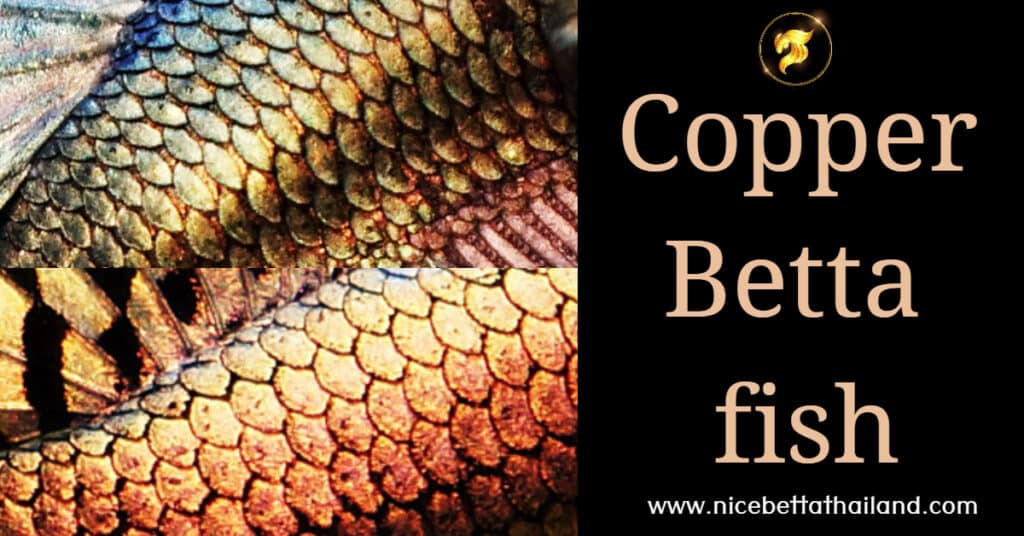Betta fish also referred to as Siamese fighting fish are commonly kept as pets within one’s office or home. Within their 2-4 year lifespan, with a small handful living longer, as an owner you may notice that your Betta fish has fallen ill. If this is the case, the following complete guide on Betta fish illnesses and diseases from A-Z will help you pinpoint what is wrong with your Betta and the steps you should take to help your fish make a full recovery.
It is important to understand that if you believe that your Bettas is ill, you have to be timely in attempting to work out what is wrong with it and provide treatment to give your fish the best chance of overcoming the illness. Betta fish enthusiasts often suggest one keeps a Betta medical cabinet stocked with general medications for common illnesses in preparation if your fish is unlucky enough to fall ill.
Signs that Your Betta Fish has Fallen
Although some of the following signs and symptoms may not always mean that your fish is seriously ill or has contracted a disease, many of these are tell tale signs that your fish is ill. These symptoms are generalized and cover most Betta fish illnesses although each specific illness will have its own unique set of signs and symptoms.
- Damaged or abnormal fins (holes or rips in fins often indicate a sick Betta fish)
- Color change (a sick Betta fish’s normal color may be faded)
- Disinterest in food over multiple days
- Inactive or less active than usual
- Tendency to stay at the bottom of the tank or oppositely gasping for air at the top of the tank
- Spots that have appeared around your Betta’s head and mouth
- Constant rubbing of fins along the side of the tank
- Swelling of Betta fish
- Enlarged eyes
- Pale yellow puss
- Difficulty swimming
Betta Fish Diseases and Treatment
Following section I will cover an extensive range of Betta fish diseases, illnesses and treatment. It is important to examine and determine your Betta’s illness and treat as soon as possible because often times it will decide the fate of your fish. Each section has explanation on the cause, symptoms and treatment for the disease.
1. Bacterial Septicemia / Red Streaks
Bacterial septicemia is one of the less likely Betta fish illnesses caused by Pseudomonas or Streptococcus bacteria.
Cause
Bacterial septicemia is caused by Pseudomonas or Streptococcus.
Symptoms
Bloody read streaks that occur across the body and fins, bloated, gasping for air, ulcers, lethargic and loss of appetite.
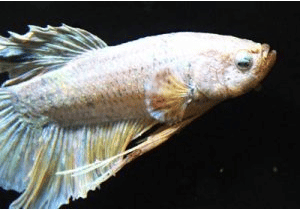
Treatment
This disease is best handled by a trained veterinarian who will medicate your Betta with an antibiotic in a quarantined tank.
2.Constipation
Due to their high protein diet with little fibre, constipation in Betta fish is common but also very curable. It is important to treat constipation as soon as possible to avoid more serious problems with your Betta.
Cause
Constipation is caused by one feeding their Betta too much food or the wrong type of food. Dried foods can lead to constipation as they swell inside the stomach opposed to live frozen food which can be easily digested.
Symptoms
Swollen stomach, faeces remain attached or oppositely, inability to pass faeces, disinterest in food and inactivity.
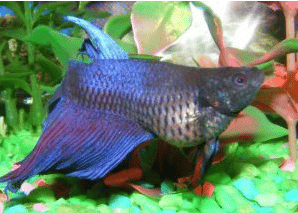
Treatment
If you believe that your Betta is constipated you should:
- fast your fish for up to three days to allow all faeces to pass and then introduce live foods.
- If unsuccessful you can give your Betta a small amount of daphnia which helps to reduce constipation or others recommend feeding them the tiniest piece of cooked pea.
- Once your fish is passing faeces normally again it is important to cut down on the amount of food you were feeding him previously as this is a large contributing factor to Betta constipation.
3.Columnaris Mouth Fungus
Columnaris often called mouth fungus, is a common bacterial infection that in particular affects fish that have already fallen for another illness or stress, such as a poor diet or unsatisfactory environment. To prevent this disease, maintain high water quality and disinfect all equipment before it enters the tank. Columnaris is highly contagious so it is vital you remove and incubate infected Betta fish.
This disease can be internal but more commonly is found externally on Betta fish. There is also a slow and a fast strain of this infection and depending on which one your Betta has it will determine how likely it is to overcome the illness.
Cause
Caused by the Saprolegnia species.
Symptoms
Cotton like growth around Betta’s mouth and white spots on mouth and fins. As this infection spreads, the Betta’s fins will become frayed. If the infection is internal, it can often show no symptoms at all making it hard to diagnose before it is too late.
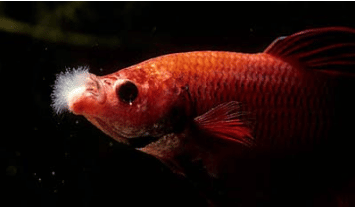
Treatment
To ensure that you treat Columnaris you must first clean the bacterial infection from the entire tank including changing the water, vacuuming gravel and adding aquarium salt. Once you have cleaned the tank, you can treat with an antibiotic or copper sulfate.
4.Dropsy
Although dropsy is a rare disease and is fatal if contracted as it leads to kidney failure, it is important to know the signs and symptoms to ensure you isolate the fish you believe have this disease to keep other Bettas safe.
Cause
Caused from multiple sources when bacteria gets into the tissue of the fish resulting in organ failure. The noticeable bloating of this disease is caused by fluid retention within the fish. Poor water quality, stress when transporting, lack of nutrition, drop in water temperature and other aggressive fish contribute to ones Betta fish contracting this disease.
Symptoms
Bulging eyes, faeces become pale and string like, protruding scales are noticeable when viewing fish from above (makes the Betta look like a pine cone), swollen body, Betta becomes inactive and disinterested in food.
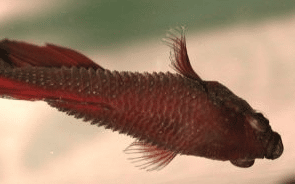
Treatment
Unfortunately once the disease has progressed there is no known, reliable treatment for your Betta fish. It is recommended that your fish is euthanized so that it does not suffer further from this disease.
5. Fin / Tail Rot
Fin / Tail Rot is common in Betta fish and starts at the end of the fin and works its way towards the body in more progressive stages. If treated, the recovery rate is high although when fins and tails grow back they may not be as vibrant or long as they previously were.
Cause
Fin rot can be caused by two Bettas fighting but can also be caused by the water quality of the tank. The bacteria that can cause fin rot lays dormant in all tanks but becomes dangerous to your Bettas when the tank is dirty, over occupied, the fish becomes stressed or injured.
Symptoms
Torn fins, inflamed rays, blackening or redness along edge of fin or tail, blood on the tips of fins and receding fin edges.
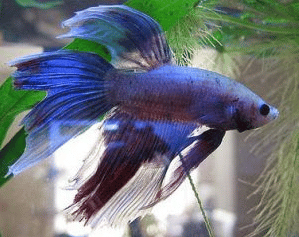
Treatment
If the fin or tail rot is in the earlier stages then the tank can be cleaned and aquarium salt can be added. Once this is done treat the infected area with 50% Mercurochrome with a cotton swab. If the illness has progressed antibiotics will be needed. Almond leaf can be added to the water after it has been changed as these release a natural Betta antibiotic.
6. Fish Lice
Cause
Caused by a crustacean parasite that feeds and lays eggs on the Betta fish.
Symptoms
Ulcers, wounds and a round parasite attach to the skin.
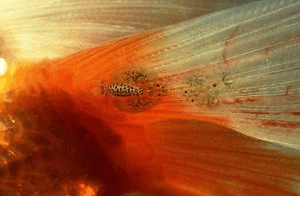
Treatment
Using a pair of tweezers, gently remove the parasite from the Betta fish. If large wounds are left behind, use a cotton swab dab 50% Mercurochrome on affected area.
7. Fungus / Fungal Infections
Fungal infections are quite common among the Betta population.
Cause
Growths occur on previously damaged areas where mucus/slime coating has been damaged. Fungal infections are contagious.
Symptoms
Cotton looking growths on the body / fin of the Betta, pale in color, disinterest in food, lethargic.
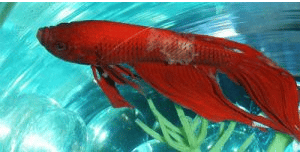
Treatment
Spot treatment using 50% Mercurochrome with a cotton swab onto the affected areas. Use same dose of medication daily and change water frequently until all fungus has gone.
8. Gill Parasites
Cause
Caused by Flukes
Symptoms
Struggle to breath properly, rubbing along the side of tank, glazed over eyes, loss of movement.
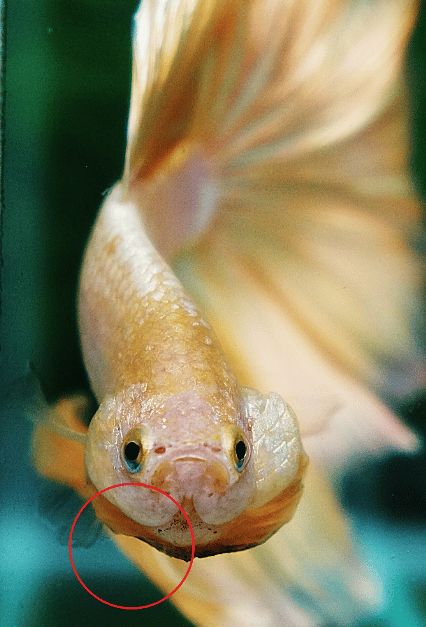
Treatment
This type of parasite is best dealt with by a veterinarian.This type of parasite is best dealt with by a veterinarian.
9. Ich / White Spot
One of the most common illnesses among Betta fish. Ich is present in the majority of fish tanks and aquariums although healthy Betta fish have natural immunity to it.
Cause
Caused by a parasite ((ichthyopthirius) that uses the Betta as its host. Once it falls off it multiplies in the bottom of the tank and these new parasites then live off other Betta fish. Ich can also be carried by frozen live food.
Symptoms
Small white dots on the body and fins and in some cases the eyes, clamped fins, rubbing on ornaments and side of tank and may become less active.
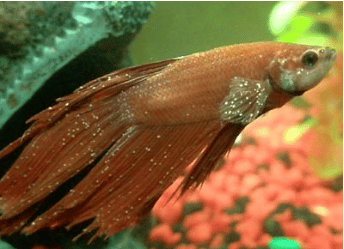
Treatment
Use formalin or malachite green to treat the entirety of the tank. If raising the temperature of your tank is an option, clean the tank and raise the temperature to 85 F/ up to 30 degrees Celsius. These parasites cannot handle the heat so within a few days your fish will make a full recovery.
10. Intestinal Parasites / Internal Parasites
These parasites live off any food that the Betta fish eats making them very lethargic and in a sense they are being starved. An owner must identify this early to treat the Betta fish in order for it to be successful.
Cause
Caused by parasites that often enter the tank through food such as brown worms. Intestinal parasites are much rarer than external parasites in Betta fish.
Symptoms
Change in behavior, lethargic and weight loss while eating normally. Intestinal parasites are contagious from one Betta to another.
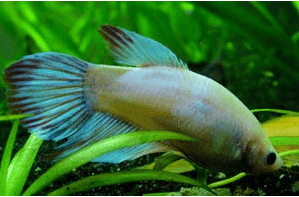
Treatment
Change out tank water and clean any object that are going back into the tank. Add one teaspoon of aquarium salt to the new water. If your fish does not improve after this, you will need to purchase antibiotics from specialized aquarium shops.
11. Popeye
Popeye is a bacterial infection which causes the Betta’s eye to swell and protrude from the socket.
Cause
Popeye is commonly caused by poor water quality from not enough water changes.
Symptoms
One or two of the Betta’s eyes will be swollen or protruding from the socket.
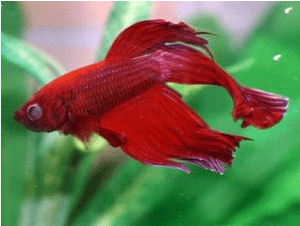
Treatment
Popeye can usually be dealt with by changing the water for a few days in a row, and adding one teaspoon of aquarium salt per ten liters of water. If the swelling does not reduce you may need to purchase antibiotics.
12. Poisoning
Cause
Poisoning of your Betta is the direct result of an unsatisfactory tank leading to high levels of ammonia, nitrite and nitrate.
Symptoms
Betta fish who have been poisoned have a tendency to stay at the top of tank and gasp for air.
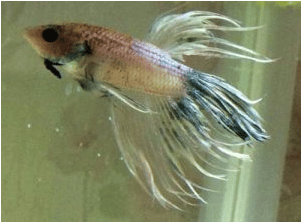
Treatment
Test the levels of ammonia, nitrite and nitrate in the fish tank using an aquarium water test kit. Dispose of water and fill tank with clean water that has been treated with chlorine remover. Some suggest using bottled water for the tank because the levels of these things have already been previously tested.
13. Slime Disease
Slime disease is common and is caused by three different parasites. Slime disease also weakens the Bettas immune system which makes them more prone to getting a secondary illness or disease.
Cause
Caused by Costia, Cyclochaeta and Chilodonella parasites.
Symptoms
Frayed fins, grey/white coating on body of fish that looks like mucus, loss of appetite, inactive and cloudy eyes in some cases.
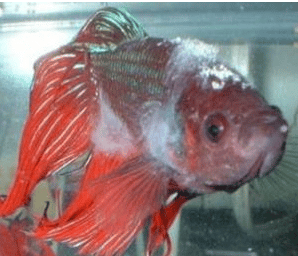
Treatment
Perform frequent daily water changes for up to a week and use malachite green. Also the use of aqua salt for up to ten days is recommended to cure slime disease.
14. Swim Bladder Disease
Not as common as other diseases in Betta fish, swim bladder disease is more common in younger Bettas . This illness is not infectious.
Cause
Caused by a bacterial infection that is usually the result of previous injury from transportation or fighting among Betta fish. Swim bladder disease can also be the result of overfeeding or poor water quality. Swim bladder in female Betta fish can be the result of damage during mating.
Symptoms
Difficulty and abnormalities when swimming, swimming on side, difficulty swimming upward, loss of balance when swimming and Bettas abdomen is swollen.
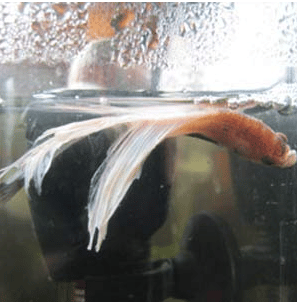
Treatment
Generally, a Betta fish will cure itself within a few days although to cure a Betta with swim bladder disease (that does not cure itself) one must administer an antibiotic. Also making the water shallower helps the Betta fish to breath and feed easier.
15. Tuberculosis
Cause
Tuberculosis in Betta fish is rare and your fish will become sick for no apparent reason. It progresses fast and you may not even realize that your fish has it until it passes away from the deadly disease.
Symptoms
Weight loss, open wounds, bent spine, fin and tail rot, other abnormalities. Be careful if you believe that your fish has TB as in some cases humans have contracted this deadly disease from a fish.
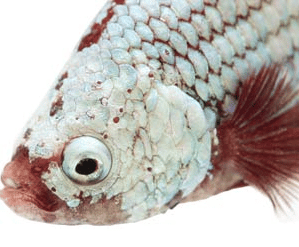
Treatment
There is no known cure for Tuberculosis in Betta fish and generally they will not survive long once they have contracted it. It is recommended that you throw out anything that has come into contact with a Betta that has this disease due to the nature of how deadly and contagious it is.
16. Velvet
Velvet is common among Betta fish and comes in the form of a parasite that looks like velvet.
Cause
Caused by parasites (adult Oodinium) that attach themselves to the Betta fish. The parasites create a hard shell around themselves for up to a week while they feed off the Bettas skin cells. Once they release themselves from the Betta they multiple at the bottom of the fish tank and then reattach themselves in greater quantities to the Bettas in the tank.
Symptoms
Golden/copper colored dust like appearance on your Bettas body and fins (this can be easier to see with the use of a torch), clamped fins, scratching against tank wall and loss of appetite.
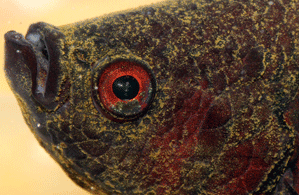
Treatment
To treat a Betta who has velvet, turn off tank lights, and if possible increase the water temperature up to 30 degrees Celsius because the parasites cannot thrive in these conditions. Once this is done use commercial malachite green remedy. It is important to treat all fish in that tank due to velvet being so contagious. Make sure you also clean the tank and fill with new clean water.
Tips to Ensure Your Betta Fish Remains Happy and Healthy
Once you have diagnosed your Betta fish with a particular illness and medicated as needed there are a few things you can do regularly to ensure your fish stays happy and healthy. It is important to remember when housing a Betta fish prevention is always better than cure so we recommend you:
- Clean your tank or fish bowl regularly
- Check pH levels of the water
- Quarantine new fish that you bring home
- Add aquarium salt
- Ensure you don’t overfeed your fish
- Remove dead fish from a tank immediately for the safety of other fish in the tank
- Ensure the water is warm
- Ensure the water is warm
Also we have group talk about betta fish for sale and share any new tip take care information on Web3.0 social group betta fish community for communicate with betta fish lover also betta fish auction


